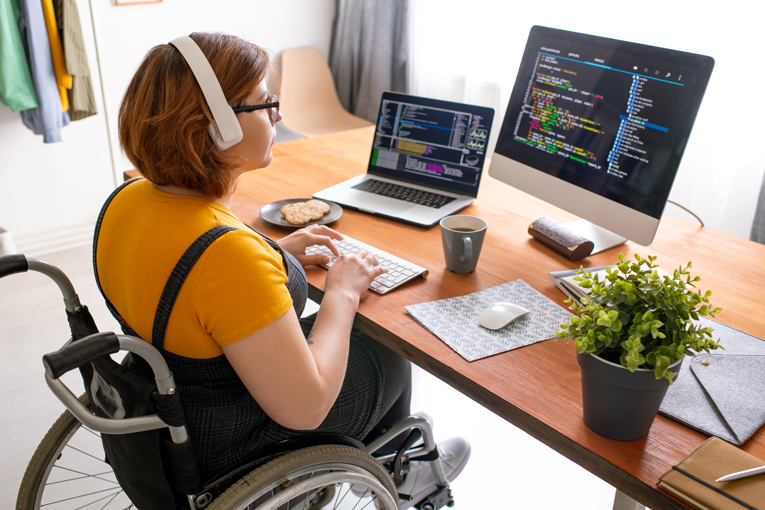What is Employment and Support Allowance (ESA)?

Employment and Support Allowance: What it is, who is eligible, and how to apply
Do you have a disability or sickness that hinders your ability to work? If so, you may qualify for the Employment and Support Allowance (ESA). The ESA is a weekly allowance. Depending on your situation, you may be eligible to receive up to £110.75 per week (£5,759 per year). You may also receive back-to-work support as a part of the scheme.

What is the Employment and Support Allowance (ESA)?
Employment and Support Allowance (ESA) is a government program that was designed as a part of the Welfare reforms in 2014. Anybody of working age who has an illness or disability that limits their ability to work may be eligible. It is available for those currently in work, out of work, or self-employed.
Types of ESA
There are three types of ESA under the benefits system. Understanding the differences is essential if you believe you may qualify. You can only qualify for one at a time.
Income-related ESA
When you claim ESA, a check is carried out by DWP on your national insurance record. If your record indicates you have underpaid, the DWP carries out a “means test.” This means they look at what income you have and how much your savings amount to. If you do not have enough to live on, you may qualify for income-related ESA.
As of April 2020, new claims for income-related ESA are severely limited. Instead, this section of the program has been replaced by Universal Credit benefits. People currently still receiving income-related ESA will continue to do so until the Universal Credit benefits scheme is finalised.
Contribution-based ESA
Contribution-based ESA is based on the amount of national insurance you have paid in the two years before your application. Contribution-based ESA is “non-means-tested”. Non-means-tested means that the amount you receive does not depend on your total valued income or assets. The amount you are awarded is independent of your possessions. You occupational and personal pension can potentially change the amount you are entitled to. However, you may be able to “keep” some of your pension before your ESA starts getting deducted.
New-Style ESA (for those claiming universal credit)
New Style ESA works very similarly to contribution-based ESA. New style ESA has replaced contributory ESA for new claimants. It is also non-means-tested and depends on how much National Insurance you have paid in the previous two years. For more information on specific similarities between the contribution-based ESA and new style ESA, see here.
Are you eligible for the ESA?
Qualifying for the ESA requires the following:
- Your illness or disability must affect your ability to work
- You must be age 16 or over
- You must be under the state pension age
- You must not be receiving statutory sick pay (or parental leave)
- You must not be receiving Jobseeker’s Allowance
- You must not claim income-related ESA if you or your partner’s savings (or assets) exceed £16,000
- You cannot claim contribution-based or universal (new style) ESA if you have not made adequate National Insurance payments
How to apply for ESA?
To make an ESA claim, you can apply online here. Before applying, make sure to have the following documents ready:
- Your national insurance number
- Your bank account number and sort code
- Your doctor’s name, address and telephone number
- Details of your income
- The date your statutory sick pay ends (if you are claiming it)
If you cannot apply online, you can also call Jobcentre Plus. The UK-based contact numbers are:
- Telephone: 0800 169 0350
- Textphone: 0800 023 4888
- Welsh language: 0800 012 1888
To receive any kind of ESA, you will need to be assessed by a health professional. The health professional will administer what’s called the “Work Capacity Assessment.” This test is designed to determine what people can do, rather than what they cannot do. The test sets clear limits on someone’s ability in the workplace. It provides a universal metric for how severe their disability is. Depending on the outcome of this test, people are placed in the “workgroup” (mild to moderate disability) or the “support group” (severe disability).
If you are placed in the “work-related activity group,” you will have regular interviews with an employment advisor. This advisor will help you improve your skills and prospects of getting a job! These advisors will be aware of your disability. Therefore, they will be especially helpful in guiding you to suitable employment.
Your payments will be temporarily stopped or reduced if you don’t attend one of these career meetings. Make sure to make them a priority.
If you are placed in the “support group,” you won’t be asked to attend any meetings. You can still talk to a personal advisor if you choose. You may also be required to have “health and work conversations” to discuss what support you might need day-to-day.
How much can you expect from ESA?
Your ESA allowance depends on your situation. These variables include:
- Your income
- The type of ESA you qualify for
- Where in the assessment process you are
As a general rule, from April 2020 through April 2021, during the assessment phase, anyone under the age of 25 will receive £58.90 weekly. Anyone over 25 will receive £74.35. Couples over 25 will receive £116.80.
Once the assessment is complete, those in the work-related activity group will receive £103.90. Couples in the work-related activity group will receive £146.35.
Those in the support-group will receive £113.55. Couples will receive £156.00. Depending on your level of disability, you may also qualify for the enhanced or severe disability premium.
These numbers are all subject to change, depending on your personal circumstances.
Takeaway
If you are struggling to make ends meet and believe you may be eligible for an ESA allowance, file a claim today. Contact your local JobCentre Plus with any questions about your circumstances.
Do you need a solicitor?
Find a solicitor on Qredible in just a few easy steps
















